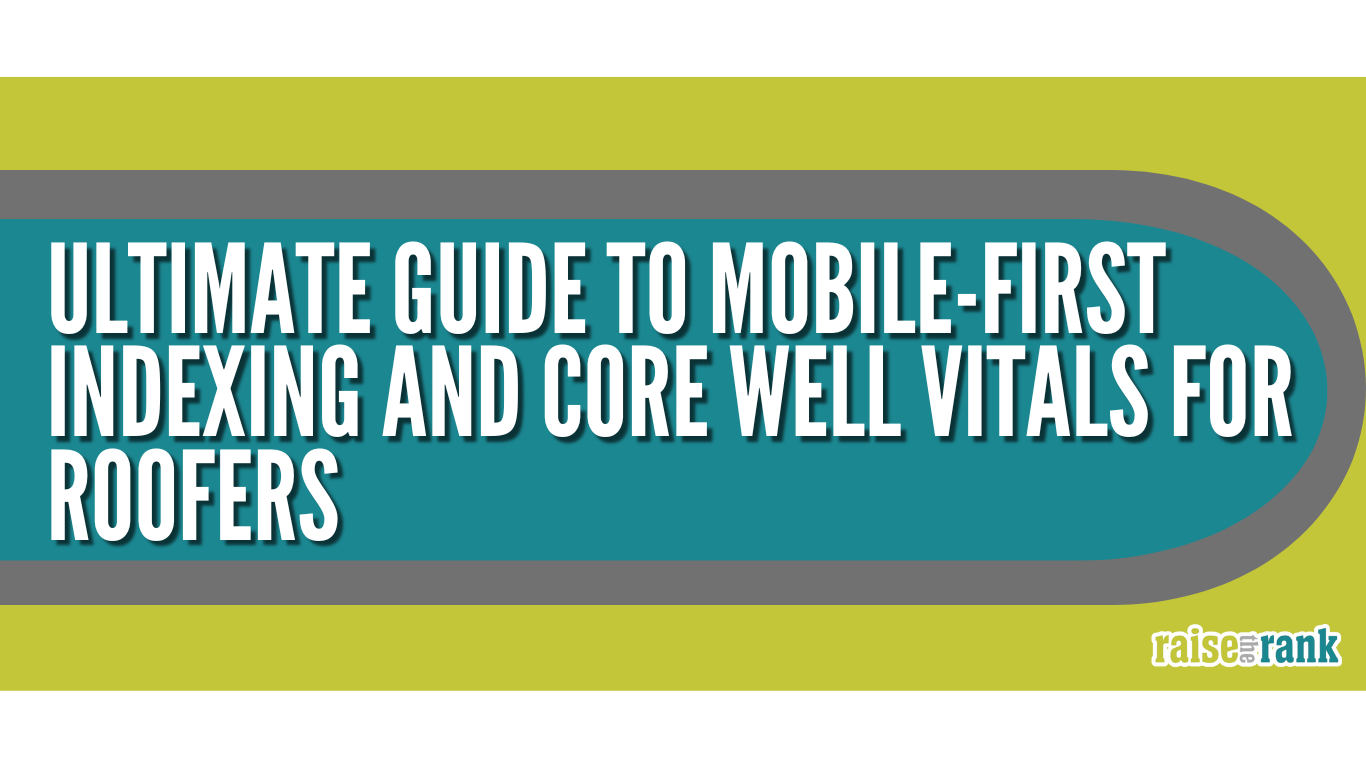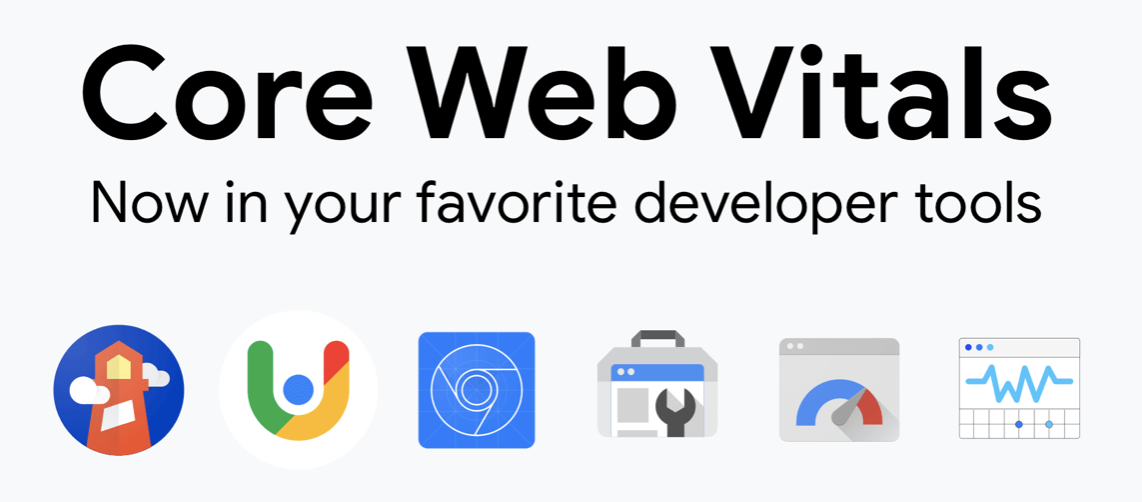
The Raise the Rank’s Ultimate Guide to Mobile-First Indexing and Core Well Vitals for Roofers will help get your roofing website ready for the huge Google update coming in May 2021. Raise the Rank – the leading digital marketing agency for roofers is always here to help your roofing company. This is a super detailed guide on CWV – Core Well vitals and mobile-first indexing.
In this guide, you’ll learn about:
• What Are Core Well Vitals (CWV?)
• What Is the Largest Contentful Paint (LCP) And How to Improve it?
• What is First Input Delay (FID)?
• What Is Mobile-First Indexing?
• What Is Cumulative Layout Shift (CLS)?
• How to Score High On Google Page Speed Insights?
Let’s dive right in.
What is CWV?
CWV refers to Core Web Vitals. These are a group of specific factors that, according to Google, are important for a good user website experience for your roofing company. These factors are made up of three measurements relating to user interaction and page speed: Largest Contentful Paint (LCP), Cumulative Layout Shift (CLS), and First Input Delay (FID).
These measurements provide Google with a way of determining your page’s overall user experience. That is something that is going to be huge in 2021. Let’s get to the first part of Core Web Vitals.
What is the Largest Contentful Paint (LCP)?
Large Contentful Paint is essentially the time taken by the page to show a majority of the content from the moment the user clicks on the link. Remember, that content to Google can be anything that’s displayed on-screen including images, video, or text. It could be a big image or a video. So, how fast does your first Contentful paint load matters for website performance on search engines? Ideally, it should load in under 2.5 seconds. Simply put, your website has to load fast to make sure that Google won’t penalize it.
Large Contentful Paint is different from other types of measurements. Most other types of page speed measurements such as First Contextual Paint (FCP) may not show the speed of the page from the user’s point of view. LCP, on the other hand, fully concentrates on what matters to the user who is interacting with your webpage.
You can easily find the LCP of any of your web pages with Google PageSpeed Insights. As a roofing website owner, this metric is incredibly helpful for your business, especially when it comes to knowing the areas that need improvement. What’s great about this free tool (Google PageSpeed Insights) is that it also lets you know how your webpages have performed on the browsers of real users (it uses Chrome browser data).
So, how can you improve your website’s LCP? Here are some effective ways:
• Remove any unnecessary plugins and third-party scripts from your website.
• Get better and faster hosting.
• Eliminate large page elements that are slowing down your webpage’s LCP.

What is First Input Delay (FID)?
This metric measures the load responsiveness of a webpage. It determines how fast the web page responds to a user’s action, such as a tap or mouse click. Ideally, a page should have a low FID so that it can be read/understood by the user sooner. FID or First Input Delay measures the interaction between the user and your page, and what’s going on with your page.
What Is Mobile-First Indexing And Why It Matters To Your Roofing Business?
Mobile-first indexing is a Google’s initiative that is designed to change how it crawls and indexes web pages. In other words, it changes how Google finds these pages and indexes in its search results. Earlier, Google used to consider the desktop version of a website while crawling and ranking webpages.
Now, with the introduction of mobile-first indexing, the search engine considers the mobile version of the website by default when it comes to crawling, caching, and ranking webpages. So, right now we’ll be focusing more on mobile because desktop just really doesn’t matter that much. However, we’re not going to forget that it’s there, but we will pay more attention to the performance and speed of mobile websites.
With mobile-first indexing, Google ranks your business based on your mobile website. So if your website looks great and your site speed is great on the desktop, but it performs terribly on mobile, then you can forget about ranking well in search engines. You have to pay attention to how your website looks and performs on mobile. How do the pages render? What does it look like? How usable is it? How is the user experience?
We are not saying that desktop does not matter at all to Google. So, if your desktop is awful as well, you’re going to have a real problem. But the main thing that Google is looking at now is what content and what information you have on your mobile site.
What Is Cumulative Layout Shift (CLS)?
Cumulative Layout Shift (CLS) signifies the visual stability of your page i.e. how stable your web page is as it loads. In other words, if the various elements on your web page do not show up properly or move randomly as your page loads, then it has a high CLS. And, this is bad.
Ideally, you want your pages and all the elements in them to remain stable as they load up. It helps users to easily and quickly know where the images, links, and other fields are located on the page even before the page fully loads up. This way, they can avoid clicking on a wrong link by mistake. According to Google, the page should maintain a CLS of less than 0.1.
So, how can you minimize your website’s CLS? Let’s take a look at a few simple tips:
• Make use of size attribute dimensions to include any media such as images, videos, GIFs, and infographics.
• If you have ads on your webpages, make sure they have their reserved space. This way, they will not show up randomly on the page or change while the page is loading up.
• If you want to add new user interface elements, add them below the fold.
How to Score High On Google Page Speed Insights?
PageSpeed Insights is a free tool from Google that is designed to help website owners detect and fix issues in their websites that could be slowing it down.
So, why speed matters for your business?
The speed of a website is one of the 200 factors that Google considers while ranking a website. There is a strong correlation between Google rankings and site speed. At ‘Raise the Rank’, we do not want you to unnecessarily lose business just because of something we can easily control.
So you have got to make sure that your website loads quickly. You have to ensure that there are no issues in the Cumulative Layout Shift. It is really important to keep track of all the key metrics such as LCP, FID, and CLS in your field data. These three measurements are hugely important.
Get In Touch
If you would like to know more about Mobile-First Indexing or Core Well Vitals and how they can help to boost your roofing business, contact us at Raise the Rank today.
